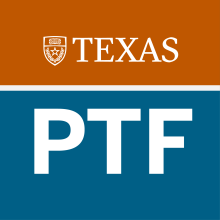Individual Fellow Initiatives

Academic Culture in McCombs School of Business
Cohort: 2022
Fellow: Kristie J Loescher
MSB does not have a standardized way to define or measure rigor in the classroom beyond using class GPAs as a proxy measure. This focus on lower GPA = higher rigor has had the unintended consequence of creating a
culture of acceptance for low student performance, which disproportionately falls on underrepresented
minorties and first-generation students. This project focuses on standardizing the definition and measurement of rigor in the classroom in a manner that supports both faculty development/promotion and student diversity/inclusion.

The Compassion Project
Cohort: 2021
Fellow: Natalie Czimskey
In a Gallup poll of UT alumni (2014), only 15-17% of UT alumni strongly believed that faculty cared about them as a person. The Gallup report (2014) relayed information on various measures of alumni well-being. Gallup found that college experience was more likely to correlate to alumni well-being than the type of university attended. Having a professor who they believed cared about them as a person was the number one driving factor in alumni well-being. This means there is long-term impact to the short-term care of our students.

Freshman Opportunities for Research in the Geosciences (FORGe)
Cohort: 2017
Fellow: Mary Poteet
I am working on a unique partnership between Austin Community College (ACC) and UT Austin to develop collaborative peer learning communities (PLCs) in the Geosciences with mixed cohorts of two-year college (2YC) and four-year college (4YC) students.

Teaching Patient Safety at the Bedside
Cohort: 2017
Fellow: Chris Moriates
Creating a culture of patient safety in teaching hospitals results in safer care delivery. The many demands of the current clinical learning environment make it challenging to routinely and effectively include bedside teaching and role-modeling of patient safety. We used a “positive deviance” model, which has been applied in various settings to help change cultural practices, to identify clinical faculty who model and teach patient safety principles during direct patient care.

